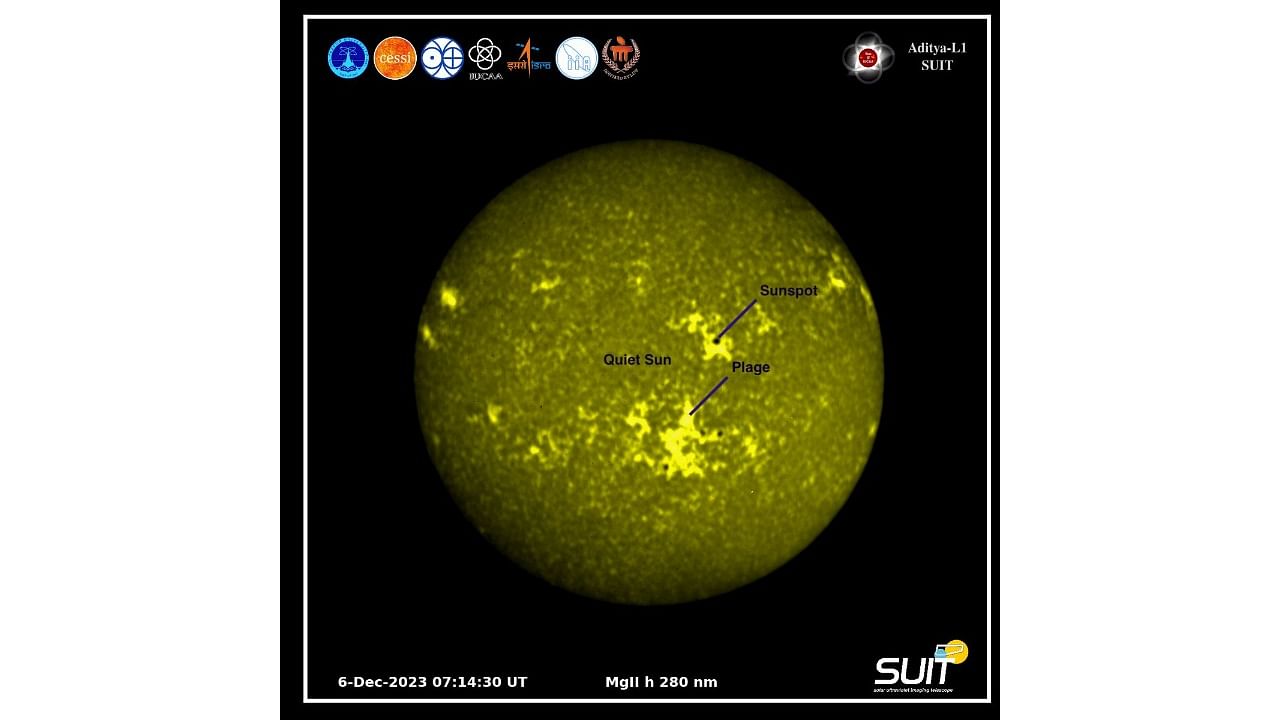
Full-disk images of the sun captured at different wavelengths.
Credit: Isro
Bengaluru: Aditya-L1, India’s first space-based observatory to study the Sun, has captured the first full-disk images of the Sun in the 200-400 nanometre wavelength range.
Releasing the images on Friday, the Indian Space Research Organisation (Isro) said they could provide scientists with “pioneering insights” into intricate details of the Sun's photosphere and chromosphere, its visible surface, and the layer of atmosphere above it, respectively. The observations from the payload will further the study of the magnetised solar atmosphere and assist scientists in restricting the effects of solar radiation on the earth's climate, the space agency said.
The Solar Ultraviolet Imaging Telescope (SUIT) onboard Aditya-L1 captured the images on December 6 using 11 different filters, or emission lines. The payload, activated on November 20, captured images that include the first-ever full-disk representations of the sun in wavelengths ranging from 200 to 400 nm, excluding Ca II h. The full-disk images of the Sun in the Ca II h wavelength have been studied from other observatories. Sunspots, plages (bright regions around the sunspots), and quiet sun (least active) regions were identified in the Mg II h wavelength.
Ca II h (at a wavelength of 396.8 nm) and Mg II h (280 nm) are two of the many emission lines or wavelengths at which the sun’s radiation is individually absorbed by elements present in its atmosphere.
A SUIT image that marks sunspots, plage and quiet sun regions/
Credit: Isro
The Inter-University Centre for Astronomy and Astrophysics, Pune, led the collaboration to develop SUIT that had as partners Isro, the Manipal Academy of Higher Education, the Centre for Excellence in Space Sciences India at IISER-Kolkata, the Indian Institute of Astrophysics, Bengaluru, the Udaipur Solar Observatory, and Tezpur University, Assam.
Aditya-L1, launched on September 2, is tentatively scheduled to reach L1, the first Lagrange point in the sun-earth system, on January 7. From L1, at about 1.5 million km from the earth, Aditya-L1 will study diverse aspects of solar activity including plasma and magnetic eruptions from the corona (the sun’s outermost layer), known as Coronal Mass Ejections.